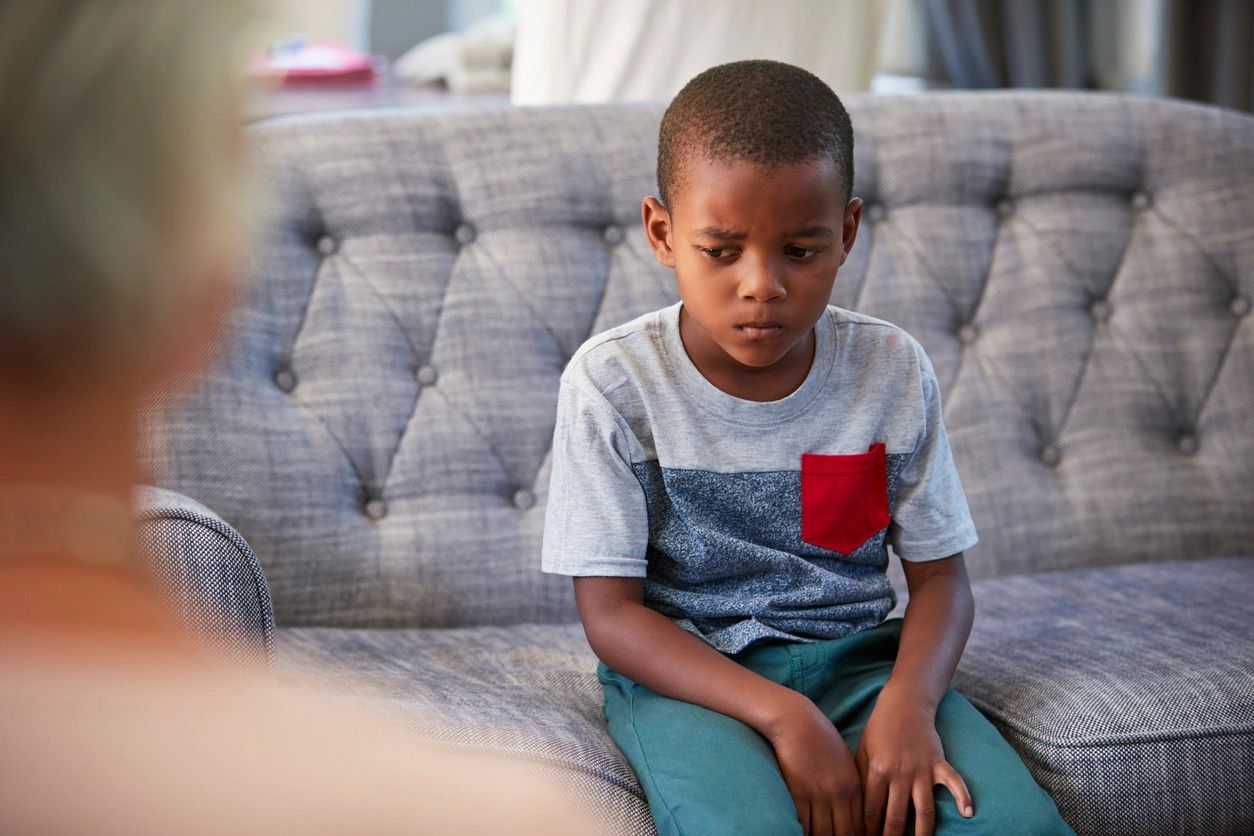“When my little boy shouts at me, it really pushes my buttons. I just can’t help it. I always end up shouting back, or worse.” – Shannon
Many parents tell me that when their child gets defiant, they “can’t help” losing their tempers. And yes, your child will definitely figure out how to push every button you have.
But if we can’t stay calm when we feel provoked, how can we expect our children to do so? After all, their brains are still developing. We’re supposed to be the role models.
When you live with children, you can expect childish behavior. It’s our job to calm the storm, not escalate it into a tsunami.
Here’s how you can model self-regulation and emotional intelligence instead of drama and tantrums, even when emotions get hot.

1. Stop, Drop (whatever your agenda is at that moment, just until you’re calmer) and Breathe.
Remind yourself that it isn’t an emergency. You can’t avoid getting triggered, at least sometimes. But you can train yourself to notice when you’re losing it, and to step away from the heat.
2. Don’t set limits when you’re angry unless someone is in danger.
For instance, if your kids are fighting, move the child who is in danger to safety. Try not to engage with the child who’s angry at all until you calm down. If your child tries to engage, say as calmly as you can: “We will talk about this once I’m calm. For now, I expect you to be on your best behavior.”
If you feel an urgent need to set your child straight, that’s a signal that you’re in “fight, flight or freeze”. When your child starts looking like the enemy, just bite your tongue and turn away.
You can still set limits with your child, once you calm down. You’ll be able to connect before you correct, so you can calm the storm instead of making things worse. (No, you don’t look weak. You look like someone who can manage her anger. You’re the role model, remember?)
3. Remind yourself that your child isn’t “misbehaving” because he’s out to get you.
If he’s “acting out,” he’s acting out emotions he can’t articulate. He’s still learning and his brain is still developing, so he needs your help to calm down and put his feelings into words.
4. Control you, not your child.
It’s natural to respond to your child’s defiance with anger. But that won’t help the situation; it just escalates the storm. Resist taking any action while you deal with your own emotions. Your priority is to melt that knot in your chest that’s making you feel so upset.
(Finding it hard to calm down? That’s our next post: Angry? Don’t lose it. Use it!)
Once you restore yourself to a state of calm, your child will be more reasonable, too. If she’s not, go on to #5.
5. Create safety by listening.
Whether your toddler is tantrumming or your teenager is shouting, what your child needs is for you to listen. Say “You must be so upset to speak to me that way …. what’s going on?” Then listen.
Wondering how your child will stop tantrumming or shouting if you “reward” him by listening? If he feels heard, he won’t need to shout. As soon as you create safety with your calm voice and willingness to hear his point of view, your child will begin to calm down. That’s not a reward. It’s teaching him that yelling is not necessary.
And ultimately, kids learn emotional regulation from our modeling. So shouting back teaches all the wrong lessons. Of course you need to set limits on dangerous behavior, but you can do that with compassion so you create emotional safety at the same time. You never need to limit feelings. And no, sending your child to his room to calm down does not create emotional safety. It teaches your child that his emotions are shameful and scary.
6. Remind yourself that all behavior is communication.
One of the biggest mistakes parents make when their child is angry is “correcting” the child’s expression of anger. But that just makes the child feel unheard, which increases their fury. It also sets up a power struggle. So if your child sweeps everything off the table onto the floor, resist telling her to “Pick that up right now!” She knows she was breaking the rules — that’s why she did it; so you would see how upset she is.
Instead, take her behavior as communication and answer what she’s telling you. “You’re showing me how furious you are by throwing things on the floor. I see you’re very angry. I’m sorry this is so hard. Tell me in words and I will listen and help make this better.” Resist “correcting” until after everyone calms down.
7. Soften your heart.
What if your child is stuck in anger and doesn’t soften? Lead the way. Soften your own heart. Sure, you’re right, at least from your perspective. But would you rather be right, or be love? Let go of being right and see it from his perspective (even if you disagree.) He’ll soften in response, and show you the tears and fears behind the anger. You might think you’re “giving in” but you aren’t changing your rules or limits. You’re just making space for his experience; validating how he feels. And when you try this, you’ll find that softening your heart to see his side of things is healing for you, too.
8. Take a break.
Can’t get any softer at this moment, because you’re both too angry? Let it go for now. Tell your child “I need to calm down; then we’ll find a way to make this better.” Once you’ve calmed down, find a way to re-connect. Model for your child how to repair the tear in your relationship. Use physical touch and playful laughter to build trust and safety.
That’s it. Less drama, more love.
This approach is transformational. But what if you find yourself exploding often, or you find it so hard to calm down that you can’t make this approach work? That’s a message that you need to do some work on yourself. After all, no one ever really “triggers” you. They’re your triggers, from your own childhood. Your child has simply unearthed them and is giving you the opportunity to heal them. That’s our next post: Angry? Don’t lose it. Use it!
Dr. Laura Markham is the author of Peaceful Parent, Happy Siblings: How to Stop the Fighting and Raise Friends for Life and Peaceful Parent, Happy Kids: How to Stop Yelling and Start Connecting and
more, – you can visit her at ahaparenting.com.
Purchase her books here;
Image and article reprinted with permission by the author.



